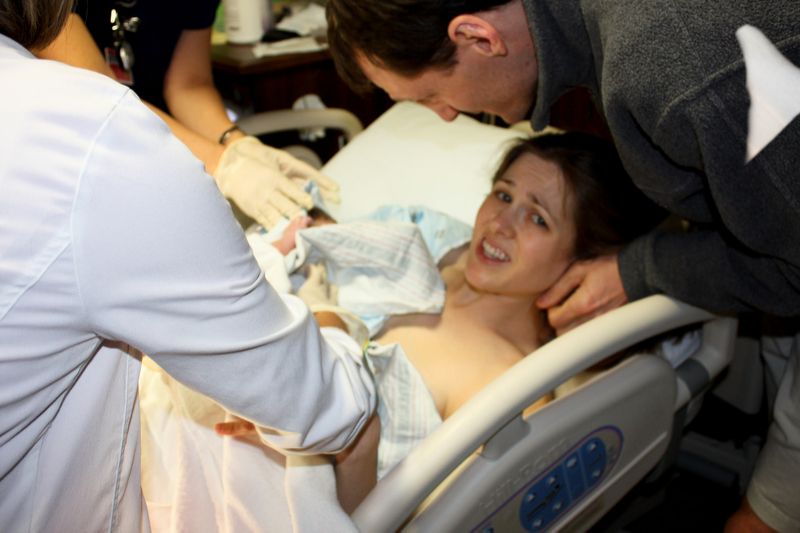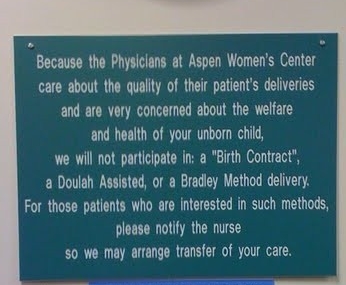Me too
“You know sexual violence knows no race or color or gender or class. But the response to sexual violence does.” ~ Tarana Burke
Tarana Burke began the “me too” campaign in 2006 as a means of helping women who had been sexually assaulted not feel so alone. It was meant especially for girls and women of colour who had survived sexual violence to inspire empowerment through empathy. It was not only “to show the world how widespread and pervasive sexual violence is, but also to let other survivors know they are not alone.”
Recently, #metoo went viral as hundreds of thousands of women, and some men, said “me, too, I’ve been sexually harassed, assaulted or violated”. There were stories told for the first time. There were experiences re-told through a stronger voice. And in private forums, women told of rapes, childhood molestation, being drugged, and more. Some couldn’t post “me too” on their social media stories because they didn’t want their parents to know, believed they were partly to blame, or felt it was too exposing. One woman said she didn’t want the world to know she was “weak”. When asked, she said she wasn’t strong enough to fight off her attacker and she felt ashamed for it.
There were waves of trauma as some survivors found it too overwhelming to see the hundreds of #metoo’s across their news feeds and had to disconnect until it passed. It was not comforting to know they were not alone. It was horrifying.
And this isn’t just an issue of female looking or female identifying individuals being sexually violated. Men and boys are also sexually assaulted. Yet, from a cultural perspective, the response is different. Males are not told that “boys will be boys” or "girls will be girls" and they just normally like to grope and grab and hump and fondle males. Males are rarely depicted being sexually assaulted in music videos as a form of entertainment. They are not routinely asked what they were wearing, if they were out alone, if they went to a party, or if they were drinking. As a culture, we don’t victim blame males to the same extent that we victim blame females.
Unfortunately, as a group, female looking individuals beyond a certain age have almost universally been subjected to sexual objectification, harassment, violation or assault. And the problem is not that they are female looking, but that as a culture, we condone violence against them.
“Rape culture” is a term that describes a society that normalises sexual violence. Rape culture is perpetuated through the use of misogynistic language, the objectification of women’s bodies, and the glamorization of sexual violence, to the point where society disregards women’s rights and safety.
Sexual violence exists along a continuum that ranges from sexual remarks to sexual touching to rape. In a rape culture, both men and women assume that sexual violence is a fact of life. Rape culture includes jokes, TV, music, advertising, words, imagery and laws that make violence against women and sexual coercion seem so normal that people believe that it’s inevitable.
What does this do to women as they access health care services?
Some are keenly aware that they receive breast and pelvic examinations when there’s no logical reason for them. And some doctors will admit to getting some sexual gratification from performing these procedures. Yet, despite any ‘warning bells’ or intuition, women are told that any physical investigation by anyone with a medical licence is for their own good and is wholly benign and acceptable. Outside of medicine, we call this gaslighting.
Gaslighting is a form of manipulation where the individual is repeatedly told that their experience and their perceptions are wrong in order to cause the victim to doubt her or himself, and ultimately lose her or his own sense of perception, identity, and self-worth.
The annual pelvic exam (not the same thing as a pap test) is no longer recommended for asymptomatic women by the American College of Physicians, as a review of 70 year’s worth of studies shows it has no benefit in terms of detecting ovarian cancer, nor reducing deaths from ovarian cancer. It does, however, cause distress for more than one third of women who received these exams where survivors of sexual assault were more likely to find them painful, embarrassing and upsetting.
Yet despite the annual pelvic exam having no benefits for asymptomatic females and not being an evidence based procedure, ACOG remained firm that it was part of the “well-woman visit” that helped to establish “open communication”. It’s curious how having a provider’s hand inside a woman’s vagina, causing her embarrassment and discomfort, establishes open communication. It seems that she is expected to strip, lie down, spread her legs and take it. And this is her being a good girl, a good patient, and open to “communication” with her provider. Again, outside of medicine, we call this gaslighting.
For survivors of sexual abuse, the routine gynaecologic exam can provoke more intensely negative feelings including more trauma-like responses during the examination. This includes intrusive or unwanted thoughts, memories, body memories and feelings of detachment from their bodies. This is what is termed “re-experiencing”. Some survivors re-experience the sensations and memories of their sexual abuse during routine gynaecologic procedures (Robohm & Buttenheim, 1997).
Still, it’s normal for survivors to be told that the pelvic exam is nothing like their assault, and that they are out of their minds for even suggesting it. Comments on social media can take a quick turn to outrage that the provider isn’t a sexual abuser (even if he is - see below), thus derailing the conversation, which was to illuminate the survivor’s experience and then eventually to engage in a discussion about appropriate trauma informed clinical services. Again, it’s gaslighting to accuse the survivor who speaks of her personal experience of either saying the experience was not abusive when it was or of saying the clinician was the abuser when she is speaking of a memory or a flashback. The survivor is perfectly capable of distinguishing an assault from a memory. This manipulation is to ensure survivors are not to believe their sensations and perceptions and that no one else will believe them either. They are not to trust themselves but only what they are told.
Fortunately, most providers engage in sensitive and evidence based interactions with their clients. Given the high likelihood that most women have been the victim of sexual suggestion, objectification, discrimination, harassment, molestation, assault or rape, there are guidelines to help a clinician conduct a sensitive examination along with the assurance that the examination will stop when the client tells them to (Bates, Carroll, & Potter, 2011).
The doctor’s office is quite adaptive to trauma informed services for survivors, and in fact, might be the one place where the victim feels safe to reveal her history. The labour and delivery ward, however, can be highly problematic.
Modern institutional maternity services are designed to run with cost-and-time effective efficiency. Labour and delivery units have been modeled after Henry Ford’s manufacturing conveyor belt to ensure quick, efficient and uniform production and services (Perkins 2004). There are time limits (aka Friedman’s Curve) for each stage of labour where an intervention to speed things up helps to manage resources. Routines that have no benefit for the mother or baby (continuous electronic fetal monitoring, admission non-stress test) are applied as a means of lessening the potential for litigation while also introducing the potential for misdiagnosis and further interventions (Clarke, 2015).
The psychological aftermath of sexual assault, fear, anxiety, depression, fatigue, chronic pain, sleep or eating disturbances, self-harm, substance abuse and suicidal thoughts or attempts, have been termed Rape Trauma Syndrome (RTS). Those who suffer from Rape Trauma Syndrome have more serious symptoms than individuals who develop PTSD from other stressors. The closer the assault is to the legal definition of rape, forced and non-consenting sexual activity, the more intense the symptoms of RTS (Faravelli, Giugni, Salvatori, & Ricca, 2004).
Does a woman’s prior sexual abuse affect her experience of her provider’s services in birth? It can.
In interviewing mothers who had been raped and then gave birth, either vaginally or surgically, participants were given the opportunity to expand on their experience. As their narratives were analysed, the primary theme that emerged was that they experienced it as “being back in the rape” (Halvorsen, Nerum, Øian, & Sørlie, 2013).
During birth, their memories of their rape included:
Lying supine, forcibly restrained
Violent approach to the body/genitals
Painfully forced entry and vaginal penetration
Perpetrator takes over control of her body
Struggle, shouting, crying for help
Darkness, blood, semen, sweat, breath
Feels unclothed, despised
Helpless, degraded,
Gives up, lets it happen, feels ashamed, leaves her body, disappears
The triggers for these memories of their rape came from the routine conditions of their birth experience:
Being placed supine, physically restrained
Legs forced apart, placed in stirrups
Invasive procedures, not being listened to or seen
Invasive vaginal examinations
Unfamiliar hands touching body, being overruled
Sight/smell of blood, amniotic fluid, feces, sweat
Dimmed lighting/being unclothed
Bodily integrity not ensured
Being tied to bed or operating table, giving up
Birth attendants control body, room, time
In reflecting on this study, it’s not hard to understand why some women use the expression “birth rape”. Their births felt like a rape (Reed, Sharman, & Inglis, 2017).
For a mother who has been sexually assaulted, she may not experience the routines of birth, such as cervical exams, as benign. To her they may be sexually violating, particularly when the birth attendants don’t take the time to discuss the routines with her, ask her for her permission, wait for her to consent and then accept her refusal should she decline.
A critical issue in maternity services, as defined by the clients, is that maternal autonomy and consent are still nebulous concepts for many operators in the industry. In a survey of over 1500 doulas in the US and Canada (Roth et al., 2014),
71.2% had witnessed a care provider pull the dead baby card, i.e., tell a client that her baby might die if she didn’t agree to a proposed procedure
88.6% had witnessed a care provider engage in a procedure without giving the client a choice or time to consider the procedure
58.7% had witnessed a care provider engage in a procedure explicitly against the wishes of the client
The closer the assault is to the legal definition of rape, forced and non-consenting sexual activity, the more intense the symptoms of RTS (Faravelli et al., 2004). A woman who experiences her birth as forced and non-consenting sexual activity is at profound risk of negative physical, emotional, psychological and relational consequences.
#metoo happens in birth as well.
This isn’t to vilify individual providers within the maternity industry. It’s a cultural issue that is deep and complex. The hospital is a microcosm of the society in which it exists (Bowser & Hill, 2010). It is not set up to support clients who have already been subject to sexual violation. Just as much of society is not equipped to engage with their female members as equal partners.
In some hospitals, the client may choose to declare her past and set up an appointment with the hospital social worker to come up with a plan for respectful care that includes protecting her dignity, obtaining her consent and engaging in trauma informed care. Given how few individuals report sexual violations, it’s hard to have much faith in this approach. This depends on the victim declaring herself vulnerable in order to modify the behaviour of the staff. Is the client who does not expose her previous violations not afforded the same concessions of dignity, consent and trauma informed care?
And it’s not just hospitals where survivors are fighting to have their dignity and their rights respected. Home birth clients who have engaged a midwife can also experience the same difficulties in ensuring an appropriate trauma informed approach. A pregnant mother planning a home birth contacted Birth Trauma Ontario with this message: "I'm 37+3 and I met with my midwives this morning and they would like to terminate our relationship because they are concerned about the tone of my birth plan and feel that I am placing my baby in danger by declining routine pelvic exams during labour. What the f*ck do I do?" The mother was open to checks if there is a reason but didn't want regular exams every few hours. The midwife terminated their relationship shortly after her client sent this message.
When birthing clients register complaints about procedures done unnecessarily or without consent or after consent was removed, the typical response from the hospital or the regulatory body is that she didn’t understand what happened to her. She's told her provider was saving hers and her baby’s life. And she ought to be grateful. It’s one of the supremest forms of gaslighting and birthing women experience it all the time. Even in general society, when a mother talks about how difficult or traumatic her birth was or that her wishes were disregarded, the usual response is that she should be grateful, as the baby is all that matters. Somehow, we think babies can thrive with broken mothers if they just ignore their own needs enough.
Giving birth is pretty much the same, physiologically speaking, across most mammals, including humans. However, how we do birth is wholly cultural. In this culture of #metoo, women are expected to submit to routines and procedures that expose them, frighten them, penetrate them, and rob them of their dignity because it’s what women do to have a baby. Asking for a better experience is called selfish.
Rape culture affects all of us and it’s pervaded the delivery room where men sometimes still “joke” about a “husband stitch” to make her perineum nice and tight for the pleasure of the penis that will penetrate her after her recovery. Where women are still forced to birth on their backs in order to accommodate the skills limitations of the paid provider. Where strangers come and go. Where she receives routine cervical checks that are primarily for the benefit of the institution’s time and resource management. Where she is given no choice regarding the birth of her breech baby. Where she still hears providers pull the dead baby card in order to gain her compliance.
When Tarana Burke talks about how #metoo has gone viral, she is concerned whether those who helped to inspire women to disclose their stories of survival are prepared for what comes next.
There are many of us who are prepared. We understand that sexual violation writes on the fabric of who you are. We know that you sometimes want more time to choose your path – for birth and beyond without arbitrary time limits. We know that you don’t trust everyone, including yourself at times. We know that you have been manipulated and need to know that no one will use manipulation or coercion to gain your compliance. We know that you don’t want to be insulted by being told to stay off the internet. We understand that safety is more than a baby who is alive at the end of the process. It’s also about whether your spirit and your soul are alive as well. We know that you have requirements for your dignity and they may not be the same as your neighbour’s. We know that you don’t respect threats, lies or coercion. We know that if there’s going to be a power imbalance in the relationship, then you are the one with the power. We ask you for your truth as that’s more relevant that a practice guideline or a study.
As individuals are still reeling from the massive participation and revelation in the #metoo campaign, this is a good time to consider how we treat each other when it comes to personal boundaries and intimacy. Pregnancy, birth, and breastfeeding are deeply personal and intimate experiences. It’s time to take a good look at our rape culture for what it is and to begin to connect with birthing clients in a way that honours each one’s dignity, experiences and boundaries. We need to work together to ensure birthing families have real choices that respect their history, their values, their future, their hopes and their identity.
And for every person who said #metoo, there are hundreds and thousands more who didn’t say it but have experienced it nonetheless. Let’s be kind together and help each other heal. And let’s help each other to experience birth in a new culture of love and respect. Let’s learn the art of trauma informed care and learn to ask better questions and to offer options that really support each other. Together we are stronger.
Much love,
Mother Billie
References
Bates, C. K., Carroll, N., & Potter, J. (2011). The challenging pelvic examination. Journal of general internal medicine, 26(6), 651-657.
Bowser, D., & Hill, K. (2010). Exploring evidence for disrespect and abuse in facility-based childbirth. Boston: USAID-TRAction Project, Harvard School of Public Health
Clarke, E. (2015). Law and Ethics for Midwifery. Routledge.
Faravelli, C., Giugni, A., Salvatori, S., & Ricca, V. (2004). Psychopathology after rape. American Journal of Psychiatry, 161(8), 1483-1485.
Perkins, B. B. (2004). The medical delivery business: Health reform, childbirth, and the economic order. Rutgers University Press.
Halvorsen, L., Nerum, H., Øian, P., & Sørlie, T. (2013). Giving birth with rape in one's past: a qualitative study. Birth, 40(3), 182-191.
Reed, R., Sharman, R., & Inglis, C. (2017). Women’s descriptions of childbirth trauma relating to care provider actions and interactions. BMC pregnancy and childbirth, 17(1), 21.
Robohm, J. S., & Buttenheim, M. (1997). The gynecological care experience of adult survivors of childhood sexual abuse: a preliminary investigation. Women & health, 24(3), 59-75.
Roth LM, Heidbreder N, Henley MM, Marek M, Naiman-Sessions M, Torres J and Morton CH. (2014). Maternity Support Survey: A Report on the Cross-National Survey of Doulas, Childbirth Educators and Labor and Delivery Nurses in the United States and Canada.








